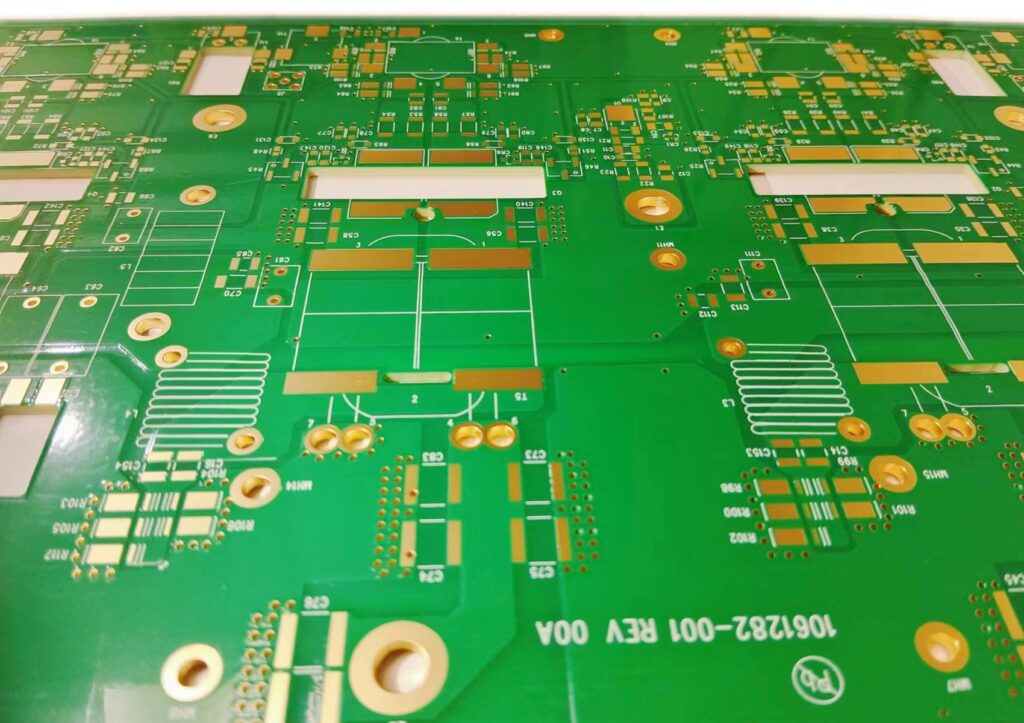The difference between thick copper PCB and standard PCB
When designing PCB projects, should we choose thick copper PCB or standard PCB? Some factors must be considered, and we must consider their differences to judge them. This article will discuss the differences between thick copper PCB and standard PCB, their primary applications, design considerations, etc.
Thick Copper PCB: The Foundation for High Current
A typical characteristic of thick copper PCBs is their ability to handle elevated currents very well, making them ideal for applications where power efficiency is critical, such as power electronics and automotive systems industries. Increased copper thickness mitigates resistive losses while enhancing the PCB’s thermal management capabilities, providing a resilient foundation for circuits operating under harsh conditions. Engineers focused on electric vehicles or power distribution systems are well-positioned to use thick copper to optimize performance and ensure excellent reliability.
In addition to enhancing current carrying capabilities, thick copper PCBs can catalyze improved heat dissipation. The increased cross-sectional area of copper traces facilitates efficient heat transfer, preventing overheating and ensuring the service life of electronic components. Again, this property is particularly advantageous in power electronics, where members often face high-temperature problems caused by high current loads.

Thick Copper PCB Design Considerations
While the advantages of thick copper are obvious, designing a PCB with thick copper layers requires careful consideration. Increased copper thickness inherently affects vital design factors such as trace width, spacing, and overall layout. Advanced design tools and simulations become assets to achieve the best design. We must consider signal integrity when working with thick copper PCBs. The increased conductivity of thick copper traces helps improve signal integrity, making these PCBs particularly suitable for high-frequency applications. Therefore our PCB engineers must understand the intricacies of impedance matching, signal propagation, and transmission line effects to fully exploit the potential of thick copper to achieve reliable, high-performance electronic systems.
Diverse Applications of Thick Copper PCB
Various industries utilize thick copper PCBs, and in high-frequency applications like RF and microwave circuits, wide copper traces with enhanced conductivity contribute to improving signal integrity. Likewise, thick copper ensures robust performance in medical devices where reliability is critical. In automotive electronics, thick copper PCBs are essential in electric vehicles, where high current and reliability are crucial. The ability to efficiently handle high winds helps improve the efficiency of electric powertrains and charging systems. Additionally, the enhanced thermal conductivity of thick copper helps manage the heat generated by various electronic components within the limited space of vehicle electronics.
Anatomy of a Standard PCB
Compared to thicker PCBs, standard PCBs maintain their status as the workhorse of many electronic applications. Standard PCBs are not designed to handle high currents or large amounts of heat dissipation and are intended for design applications where miniaturization and space constraints are a priority. Thinner copper layers allow for more compact designs, making standard PCBs the preferred choice for devices where size and weight considerations are critical. This feature has proven to be advantageous in the field of consumer electronics.

The difference between the two
Standard PCBs are relatively low-cost and suitable for a variety of applications. However, their limitations become apparent in high-power and high-reliability scenarios. Thick copper PCBs offer enhanced functionality but add manufacturing complexity and cost. PCB designers need to carefully evaluate the specific needs of their project during the selection process, considering factors such as power requirements, thermal considerations, and budget constraints. Standard PCBs have thinner copper layers and use simpler manufacturing processes, resulting in faster turnaround times and lower production costs. In contrast, thick copper PCBs require precision in manufacturing due to their increased complexity, which increases costs and lengthens production time.
Make the right choice
Whether choosing the reliability of a standard PCB or leveraging the power of thick copper for high-performance applications, the key lies in aligning the functionality we want to achieve and the technology used. Both have design advantages, and we must make a clear choice to achieve the best functionality.


